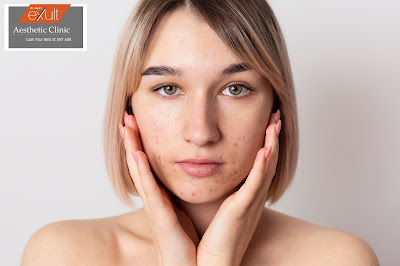How to Transform Your Skin in 4 Weeks, According to Experts

Transforming your skin in four weeks can be an achievable goal with a consistent skincare routine and healthy habits. While individual results may vary, here are some expert-recommended tips to help improve your skin's health and appearance over a four-week period: 1. Cleanse and Moisturize: Start by establishing a proper cleansing and moisturizing routine. Choose a gentle cleanser suitable for your skin type to remove dirt, oil, and impurities. Follow up with a moisturizer to hydrate and nourish your skin. 2. Exfoliate Regularly: Incorporate exfoliation into your skincare routine to remove dead skin cells and promote cell turnover. Use a gentle exfoliator once or twice a week to reveal smoother, brighter skin. Avoid over-exfoliating, as it can cause irritation. 3. Protect from the Sun: Shield your skin from harmful UV rays by applying sunscreen with a broad-spectrum SPF of 30 or higher daily, even...


